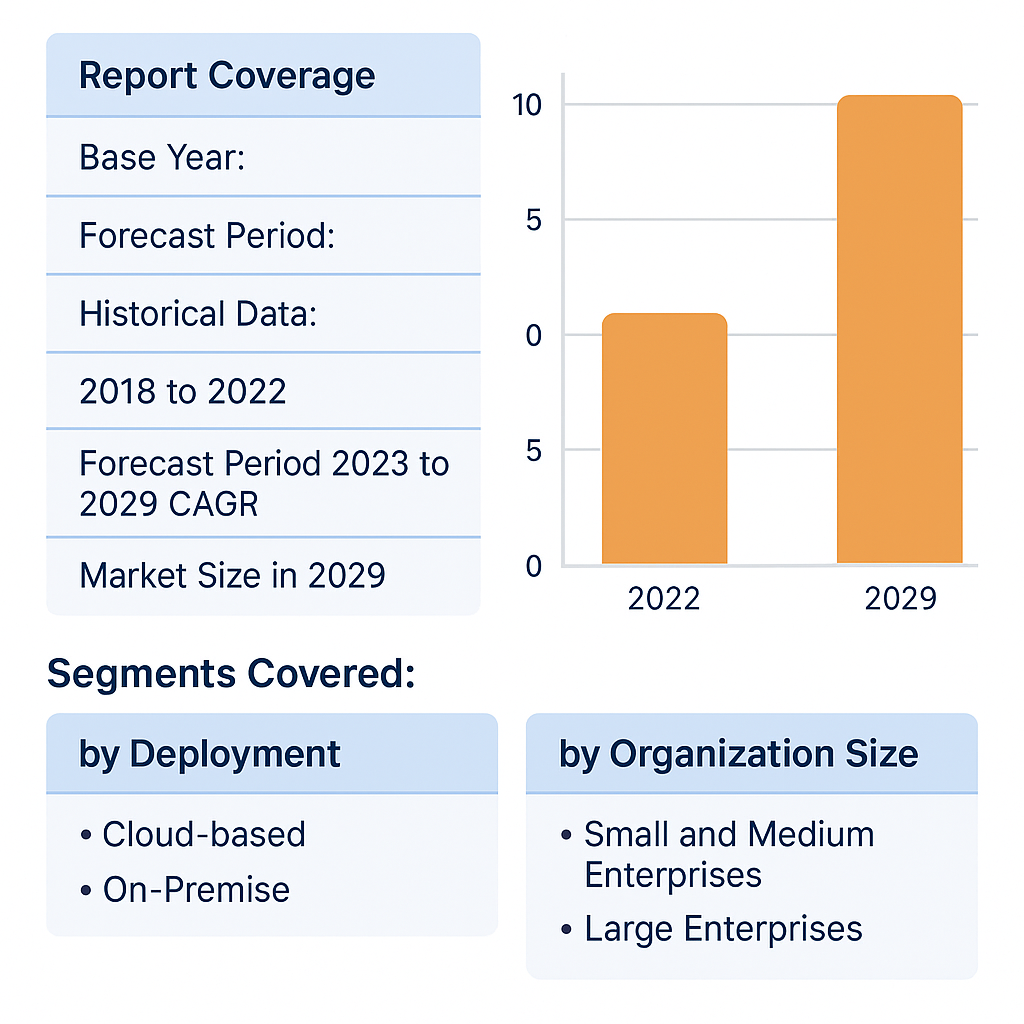Global Dock Scheduling Software Market Size Set to Reach USD 10.20 Billion by 2029, Driven by E-Commerce Expansion and Operational Efficiency
The global dock scheduling software market is projected to grow from its current valuation to USD 10.20 billion by 2029, registering a compound annual growth rate (CAGR) of 11.34% from 2023 to 2029.
Market Definition and Estimation
Dock scheduling software is a digital solution that enables distribution centers and warehouses to optimize inbound and outbound logistics by managing dock door appointments. These platforms facilitate efficient scheduling, reduce manual coordination, and enhance visibility across the supply chain. The market’s growth is attributed to the increasing demand for streamlined logistics operations and the adoption of advanced technologies in warehouse management.
Get the Sample Copy of The Report: https://www.maximizemarketresearch.com/market-report/global-dock-scheduling-software-market/80380/
Market Growth Drivers and Opportunities
Several factors are propelling the growth of the dock scheduling software market:
- E-Commerce Expansion: The surge in online shopping has intensified the need for efficient warehouse operations, prompting the adoption of dock scheduling solutions to manage increased shipment volumes.
- Operational Efficiency: Businesses are seeking ways to reduce dwell times and improve turnaround, leading to the integration of scheduling software that offers real-time visibility and coordination.
- Cloud-Based Solutions: The shift towards cloud computing allows for scalable and flexible deployment of scheduling software, catering to businesses of varying sizes and needs.
Segmentation Analysis
The dock scheduling software market is segmented based on deployment and organization size:
- By Deployment:
- Cloud-Based: Dominating the market with a 68.9% share in 2022, this segment is expected to grow at a CAGR of 12% through 2029, driven by the benefits of scalability, reduced infrastructure costs, and ease of access.
- On-Premise: Preferred by organizations requiring greater control over their systems, this segment continues to serve specific industry needs.
- By Organization Size:
- Small and Medium Enterprises (SMEs): These businesses are increasingly adopting cloud-based solutions to enhance operational efficiency without significant capital investment.
- Large Enterprises: With complex logistics operations, large enterprises are investing in advanced scheduling software to manage multiple dock sites and integrate with existing systems.
Country-Level Analysis
- United States: As a leader in technological adoption, the U.S. market is experiencing significant growth in dock scheduling software, driven by the expansive e-commerce sector and the need for efficient logistics management.
- Germany: Germany’s strong manufacturing and logistics sectors are embracing dock scheduling solutions to enhance supply chain efficiency and meet the demands of a growing e-commerce market.
Competitive Landscape
The dock scheduling software market is characterized by the presence of several key players focusing on innovation and strategic partnerships to enhance their market position. Companies are investing in research and development to offer advanced features such as real-time analytics, integration capabilities, and user-friendly interfaces. The competitive landscape is dynamic, with both established firms and new entrants striving to capture market share through technological advancements and customer-centric solutions.
To Get Full Report : https://www.maximizemarketresearch.com/market-report/global-dock-scheduling-software-market/80380/
The global dock scheduling software market is on a robust growth trajectory, fueled by the increasing complexity of supply chains and the need for efficient logistics management. As businesses continue to seek solutions that offer operational efficiency and scalability, the adoption of dock scheduling software is expected to rise. With technological advancements and a focus on customer needs, the market presents significant opportunities for innovation and growth in the coming years.



